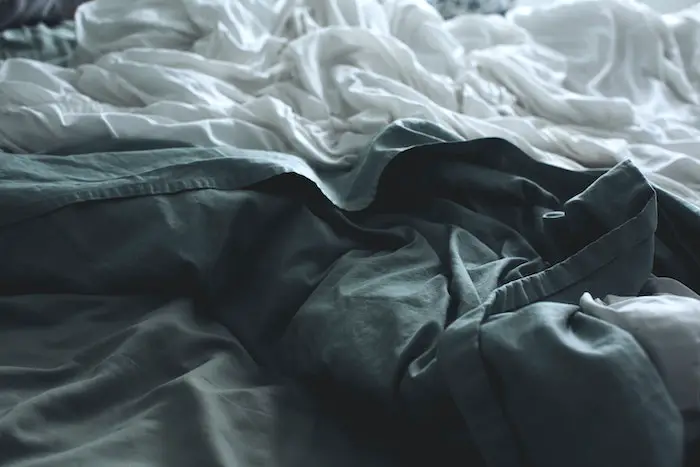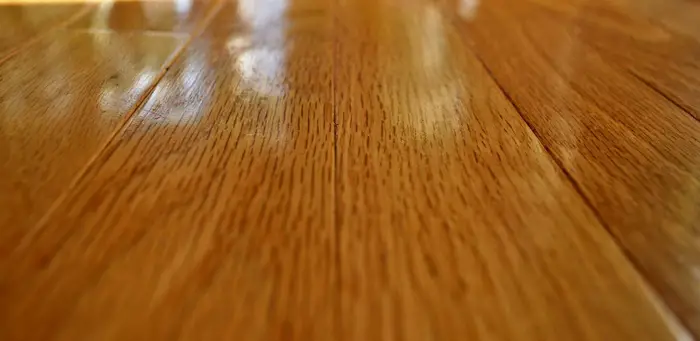How does it feel to wake up in the middle of the night with lint balls all over your sheets? It isn’t delightful.
They may irritate the eyes and other senses. Fortunately, lint balls can typically be removed by slicing or scraping them away with a lint shaver. You may shave the lint balls and fuzz that accumulate around your bedsheet.
Regular rubbing of the fabric loosens entangled surface fibers, resulting in tiny balls as the loose fibers clump together. These fibrous balls remain on the fabric because the loose micro-threads act like an anchor.
Certain lint balls may be persistent due to strong anchor fibers. Apart from lint shavers, there are various alternatives for getting rid of these irritants. Let’s look at some additional methods for removing lint balls.
Remove Lint from Bed Linens without Lint Shaver
You might be using a lint shaver/roller frequently to get the job done. Here are five other alternatives you may choose to get rid of lint balls:
1. Use Distilled White Vinegar
Following the lint roller approach, the most common way to remove lints is using distilled white vinegar. Alternatively, you may add distilled white vinegar to the water you use to wash your bedsheet.
Add a half cup of vinegar to the washing machine and run it normally. You may add additional if desired. The vinegar will break down any small particles stuck on the fabric.
The simplest way to get rid of the lint balls.
2. Use a Pumice Stone

Without using chemicals, you can remove a significant amount of lint balls and pet hair from your bedsheet. The trick is to use a pumice stone which is the simplest solution.
All you need to do is rub the stone across your bedsheet or other fabric. The pumice stone will perform wonders in removing any lints from them.
3. Use Masking Tape
This could be a somewhat costly method. You may remove the lint balls with masking tape, packing tape, sticky tape, invisible scotch tape, or contact paper.
Though these are not the cheapest methods for removing lint, they are worth trying. It’s as simple as applying it on your bedsheet. Lint balls may cling to it, removing any particles that stick to it.
4. Use Hair Dryer
Hairdryers are common household appliances. Why not make more use of them? Apart from styling your hair, you may use them to remove lint balls from bedsheets.
Arrange your bedsheet on a fitting surface. Following that, direct the air toward the bedsheet. The powerful jet of air will remove any lint balls accumulated on your sheet.
5. Use Anti-Static Spray
You can use an anti-static spray to keep lint from forming on your sheets. The method is simple. Only spray a light mist of the liquid over the fabric, making an invisible barrier. It works to keep lint balls from sticking to the linen.
That is how you can keep your bedsheets clean.
What Causes the Lint Balls?
Lint balls are formed when two distinct types of fabric or material rub against one another.
When you sleep or use your bed, some friction occurs between your body and the bedsheet. Even if you’ve shaved, your body’s minute hair may still be too coarse for the sheets. It results in the formation of lint balls in the fabric. Indeed, lint balls can also form when you wear synthetic textiles, such as polyester.
The problem even affects the finest materials such as cashmere, cotton, wool, and acrylic blends. The fact that sheets and blankets shed a little fuzz over time is normal, but leaving them like this is not.
With proper maintenance, you may avoid the formation of lint balls and extend the life of your bedsheet.
Precautions to Minimize Lint Balls
Lint balls can be very annoying and uncomfortable. They can even make the sheets rough and scratchy. However, you can prevent lint balls by taking good care of your sheets and buying the right linen.
- Avoid sheets that look or feel thin or rough or sheets that have polyester or other synthetics in them.
- Avoid using hot water to wash or dry your sheets because they can weaken the fibers.
- Brighteners and other bleaching agents can weaken and change the color of fibers. Hence, do not use them on your sheets.
- Use a low or medium heat setting to dry.
- Line drying is best if it’s possible. Because sheets dry out too quickly, they become brittle and lose their shine and finish.
- It’s best to keep clean sheets in a dry place away from direct sunlight.
- For each bed, keep at least three different sets of sheets.
- It’s better if you change your sheets at least once a week.
Apart from following these basic instructions, it’s critical to watch your detergent usage while doing laundry. It is recommended to use a light detergent or soap nuts. It’s better to wait until the detergent is diluted before washing sheets.
Detergents that are not appropriately diluted can stain fabric. Even if the detergent is not entirely washed out, the fabric will feel stiff.
Tip: You may reduce the amount advised by the manufacturer by half and add one cup of white vinegar. Use while rinsing to eliminate all traces of detergent.
How to Keep Lint Off Your Other Sheets During Laundry

While the most basic treatment is to wash lint-free and affected sheets separately, there are a few additional considerations. Lint is generated more frequently in natural fiber fabrics such as wool and cotton than in synthetic fiber fabrics. Specific models of washing machines may be more prone to lint accumulation than others.
This could be a symptom of a malfunctioning washing machine or a problem with your washing technique. Here are some suggestions for preventing lint and restoring the appearance of clean fabric.
- Separate your sheets into colored batches. This will help reduce the visibility of lint.
- Wash high lint sheets on a gentle cycle.
- If you can afford to wash the lint sheets less often. Go for it.
- Deep clean your machine once in a while.
Frequently Asked Questions
1. Is it possible for a washing machine to create lint balls in the fabric?
While a washing machine does not cause the formation of lint balls, it can accelerate the process. However, you may minimize it by employing innovative laundry day strategies. First, sort by fabric type, and wash on cold, mild cycles.
2. Can a change in washing detergent aid in removing lint from bedsheets?
Certain laundry detergents contain enzymes to clean the fabric. One of these enzymes—cellulase—can help loosen and remove lint balls during the wash. Switching to this type of detergent in conjunction with a moderate, cold water cycle may help eliminate lint balls.
3. How frequently can you wash your sheets to avoid lint balls?
On average, it is recommended to wash your sheets weekly. If you’re short on time or don’t use your bed every night, you can wash your sheets every two weeks.
See Also:
10 Ways To Remove Lint Without A Lint Roller
Where Does The Dirt Go When You Steam Clean?
How To Clean Felt In A Jewelry Box
How To Clean Steel Wool? + What Not To Do


